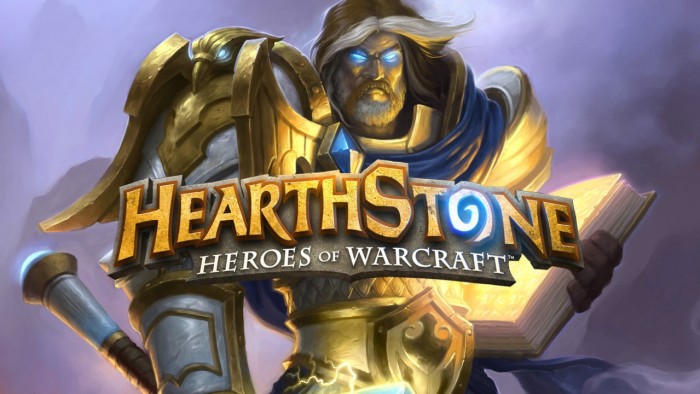From the World of Warcraft Encyclopedia:
“This is the call of the paladin: to protect the weak, to bring justice to the unjust, and to vanquish evil from the darkest corners of the world. These holy warriors are equipped with plate armor so they can confront the toughest of foes, and the blessing of the Light allows them to heal wounds and, in some cases, even restore life to the dead. Ready to serve, paladins can defend their allies with sword and shield, or they can wield massive two-handed weapons against their enemies. The Light grants paladins additional power against the undead and demons, ensuring that these profane beings corrupt the world no longer. Paladins are not only zealots, but also guardians of the righteous, and they bestow blessings on those the Light would shine upon. The Light radiates from paladins, and worthy allies who stand near them are emboldened by its power.”
According to lore, the first Paladins were the draenei, who were brought to the Light by the Naaru as they fled Argus. They were granted access to the healing power of the Light, as well as fortifying themselves with its virtue. They are the naturally enemy of the Scourge and the Burning Legion. Hearthstone’s Paladin class mirrors their RPG versions very closely, with a focus not just on physical strength and rallying allies with offensive and defensive abilities, but also in their use of Holy magic to either heal their minions or smite enemy ones.
Paladins are a cross between multiple classes, merging some of each class’ strengths, but also some of their weaknesses. This means that the Paladin has access to a host of weapons like the Warrior, but also to healing spells like the Priest. Beyond that, the Paladin can also buff minions like Druids and deal AoE damage like the Mage. To say that Paladin is a versatile class would be an understatement.
And who better to serve as the Paladin hero other than the founder of the Knights of the Silver Hand himself, Uther Lightbringer. Cosmetic alternatives include Lady Liadrin, matriarch of the Blood Knights, and Arthas Menethil
In Hearthstone, Paladin class is represented by the Uther Lightbringer. Players can also unlock two alternative, cosmetic Paladin Heroes – Lady Liadrin and an uncorrupted version of Arthas Menethil.
Hero Power and Unique Mechanics
As the leader of armies, the Paladin class’ natural hero power is Reinforce, which summons a 1/1 Silver Hand Recruit. This power is perfect for early game players, especially if you’re playing against classes and decks that don’t have 1-damage cards or powers. Being able to constantly generate minions synergizes well with other Paladin cards, particularly those that buff Silver Hand Recruits, like Quartermaster or Light-Infused Stegodon.

In every expansion, each class gets a specific set of cards that fall under a particular category unique to, or is synergized more effectively with, a class. For Paladin, these cards can fall under these categories or tribes:
Silver Hand Recruits – In terms of synergy with other class cards, the Paladin’s Recruit hero power is probably the most efficient. Silver Hand Recruits are considered a separate tribe and come with their own unique card interactions, mostly revolving around buffs. Cards like Quartermaster and Warhorse Trainer up your Silver Hand Recruit’s attack and health, while cards like Level Up! and Lightfused Stegodon adapt your Recruits in unique ways. Cards like Crystal Lion, on the other hand, are dependent on the number of Recruits you have on board to activate a specific effect (in Crystal Lion’s case, it gets a discount for every Silver Hand Recruit you control).
Buffs – Between Paladin and Druid, the former arguably has the more powerful, albeit more risky buffs: Cards like Galvadon, which can adapt 5 times, can be extremely powerful, provided your opponent doesn’t have a hard removal spell (which is unlikely, considering Galvadon only shows up late-game). Other Paladin staples provide the same high risk/high reward scheme, like Blessing of Might and Blessing of Kings. However, Paladins are also masters at ‘handbuffs’, a play style that involves buffing minions while they’re still in your hand. Cards like Val’anyr and Smuggler’s Run, along with neutral cards like Don Han’Cho, if used strategically, can provide you with a mid-game board full of huge minions.

Murlocs – Paladins are probably the last class you’d think of to have great synergy with murlocs, and yet, Murloc Paladin decks are cancer a staple in Wild and Arena. In every expansion, Paladins get a set of murloc minions and spells that synergize with other Paladin cards, particularly the cards that buff minions.
Divine Shield – Technically, Divine Shield is a neutral effect; however, the Paladin class has the most number of cards that revolve around this mechanic, either by granting other minions Divine Shield like Argent Protector, or gaining a bonus effect whenever a Divine Shield is broken like Bolvar Fireblood.
Strengths and Weaknesses
Strength
Better Healing Than Priests – It makes sense, lore-wise, for Paladins to have powerful healing spells; they are Holy Warriors, after all. Beyond healing massive amounts of health in a single go, however, many Paladin healing spells also have an extra effect, most commonly card draws. Paladins also have access to arguably one of the most powerful healing minions in the game: Ragnaros, Lightlord, who heals 8 points of health to friendly characters (not to mention is an 8/8 monster).


Weakness
Needs the Backup – Buffing minions are the Paladins greatest strength, but also a potentially glaring weakness. Without minions, most Paladin decks will be left dead in the water, with little offensive spells to deal damage. Sure, you can probably play around this with a couple of minions, but if a Paladin player doesn’t put enough high health minions on board, or aren’t able to buff a minion enough, any hard removal spell would render their strategy useless.
Weak Early Game – Although some Paladin decks rely on early game domination (like Murloc Paladin), if your opponent is able to survive to mid-game, then it’s pretty much game over for Paladin. Unfortunately, despite having great buff cards, Paladin lacks strong early game minions. Cards like Aldor Peacekeeper can probably stall for time, but if your opponent has board clear, or a hard removal, or a minion to trade with, then building an early game board will be extremely difficult for Paladins.
No Burn/Reach – Yes, Paladins are great late-game players, and their ability to constantly damage opponents with consistent damage can whittle away health down to critical, but that’s about it: Paladin lacks the reach to close out a game with an OTK. Of course, you can probably get away with an OTK meme deck, but let’s be real, how often does that play out? All in all, without any strong big damage spells, Paladin can suffer in the late game as much as they can thrive. There are ways to play around this, but if your opponent is smart and saves their hard removals until the end, then a Paladin will quickly run out of cards to threaten their enemy.
Sample Decks
Despite their weakness, Paladins can definitely play around any shortcomings with the right amount of aggro and tempo. Here are some sample decks to help you climb the ladder
Aggro Paladin Deck
Arcane Dust: 5,280
| Mana | Card | Amount |
| 1 | Blessing of Might | 1 |
| 1 | Righteous Protector | 2 |
| 3 | Divine Favor | 1 |
| 3 | Unidentified Maul | 2 |
| 5 | Call to Arms | 2 |
| 5 | Prince Liam | 1 |
| 6 | Sunkeeper Tarim | 1 |
| 7 | Vinecleaver | 1 |
| 1 | Acherus Veteran | 2 |
| 1 | Argent Squire | 2 |
| 1 | Dire Mole | 2 |
| 1 | Fire Fly | 2 |
| 1 | Glacial Shard | 2 |
| 2 | Dire Wolf Alpha | 2 |
| 2 | Knife Juggler | 2 |
| 2 | Ironbreak Owl | 1 |
| 3 | Wolfrider | 2 |
| 4 | Spellbreaker | 1 |
| 5 | Fungalmancer | 1 |
Aggro Paladin addresses the class’ weakness of being reliant on minions by filling their decks with cheap, low stat minions that can be buffed to pose a threat. Card draws like Divine Favor help you stay in tempo, and with the right draws, can easily overwhelm opponents by early to mid game.
Call to Arms is a great way to save some of your low-health minions for mid-game, buffing them enough to either survive trading with your opponent’s minions, or as lethal threats if not checked early. Tech cards like Ironbreak Owl and Spellbreaker are there to stave off any potential threats from your opponent, buying you some time to set up your board further.
Murloc Paladin
Arcane Dust: 6,180
| Mana | Card | Amount |
| 1 | Glow-Tron | 2 |
| 1 | Righteous Protector | 2 |
| 2 | Hydrologist | 2 |
| 3 | Divine Favor | 1 |
| 3 | Unidentified Maul | 2 |
| 4 | Annoy-O-Module | 2 |
| 5 | Call to Arms | 2 |
| 6 | Sunkeeper Tarim | 1 |
| 1 | Murloc Tidecaller | 2 |
| 2 | Rockpool Hunter | 2 |
| 3 | Murloc Warleader | 2 |
| 3 | Nightmare Amalgam | 2 |
| 4 | Gentle Megasaur | 2 |
| 5 | Fungalmancer | 2 |
| 5 | Wargear | 2 |
| 7 | Giggling Inventor | 2 |
Murloc decks are mostly memes more than anything, but it’s hard to deny that they are a threat both in Standard and Wild. Murloc decks operate on the same concept as aggro decks, which is go face as much as you can, but coupled with the buffing powers of Paladin.
Of course, the downside is the low starting health of most of your murlocs, but this deck plays around this by providing you with Giggling Inventor and Annoy-O-Module, both of which can then be buffed with Wargear.
This concept can also be applied to a Silver Hand deck: simply replace all murloc cards and Gentle Megasaur with spells that can generate multiple Recruits and either Quartermaster or Lightfused Stegodon to adapt your minions once they’re in play.




